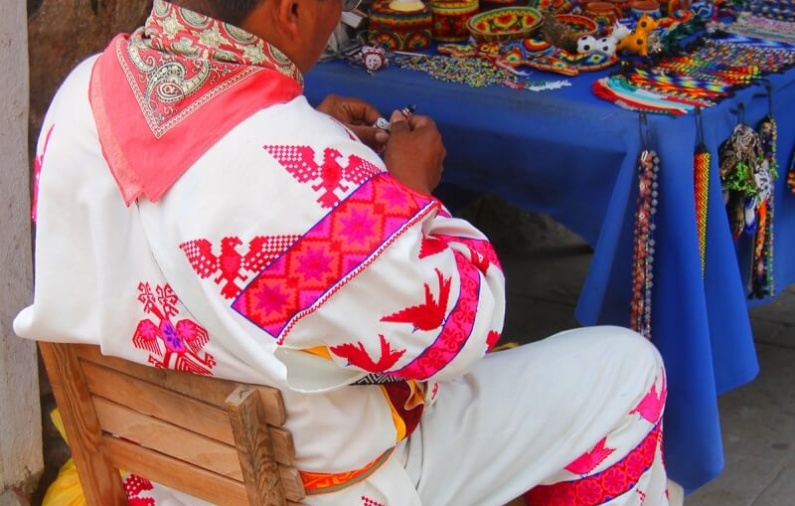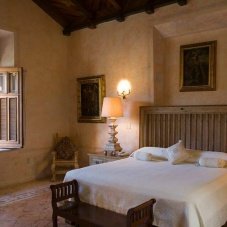
Color, imagination and detail make the combination that has given birth to the art of tis indigenous people.
Native mainly from the mountainous area of Jalisco and Nayarit, they can however also be found in the Bajío zone, where their main cultural centers are. Their name comes from the Huichol word Wikarika, meaning shaman. Thanks to their geographic isolation they have been able to keep most of their traditions. Originally they did not have a written language, so the graphic representations and symbols have been their main form of preservation. Their religion is focused on veneration of deer, corn and peyote.
That is why we can see that the art and handcrafts they produce are so colorful and they use the symbols they have used along their history, especially those regarding their faith.
Outstanding are the pictures, that stem from the ancient ceremonial tables known as nearika. Now they work with color beads stuck with wax and resin to create different figures.
Also notorious are the ornaments of necklaces of multicolored beads; aforetime materials such as clay, stone and colorants were used. The use of beads started with Spanish colonization.
The new material have allowed more elaborated and colorful designs, making them also more easily commercialized.
Although these handcrafts are the most widely known, they also produce items as ceremonial arrows, woven bags, ceremonial masks and “God’s eyes” among others.
Discover a variety of designs and styles in these destinations:
Riviera Nayarit:
Hotel Cielo Rojo
Casa de Mita
Playa Escondida
Puerto Vallarta:
Luna Líquida
Hacienda San Angel
- Tags:
- Art

With over 10 years of experience in the hospitality industry and a bachelors in Hospitality and Tourism Management specializing in marketing and sales, Mary Carmen has developed her career working at various hotels in Mexico and abroad, focusing in recent years on the boutique hotel industry. Passionate about tourism in Mexico, in every trip she seeks to find the cultural, culinary and historic highlights of each destination.
Leave a Reply




